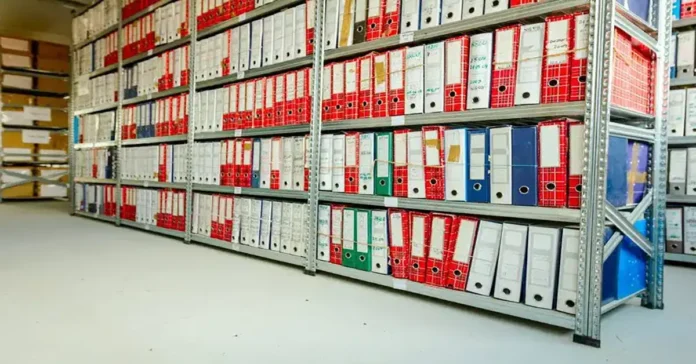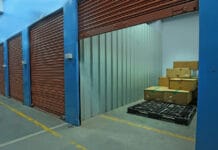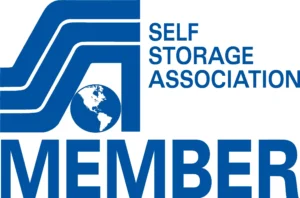Efficient document organization is crucial for maintaining productivity and reducing stress in any workplace or personal setting. By implementing effective strategies such as sorting, categorizing, and utilizing various storage options like box storage, self-storage, and utility lockers, you can streamline access to important information. Decluttering your documents not only frees up physical and mental space but also improves workflow efficiency.
A well-organized document system offers numerous benefits. It enhances accessibility, allowing you to quickly retrieve needed documents without wasting time searching. This saves valuable resources and enhances overall operational efficiency. Moreover, organized documents contribute to better decision-making by providing accurate and timely information.
Choosing the right storage options is key to maintaining an organized system. Whether opting for digital solutions like cloud storage or physical solutions like filing cabinets, each method offers unique advantages in terms of accessibility and security. These options ensure that your documents remain safe and easily accessible when needed. Embrace these strategies to create a streamlined document management system that effectively supports your professional and personal goals.
Organize Documents Efficiently
This offers numerous benefits that make it worthwhile. First, it saves time. With well-organised documents, you can quickly find what you need without searching through piles of paper or digital files. This efficiency reduces stress and frustration, especially during busy periods.
Second, it improves productivity. A clutter-free workspace enhances focus and concentration, allowing you to work more effectively. Well-organized documents also facilitate smoother workflows and better communication within teams.
Third, it ensures important documents are safe and easily accessible. Proper organization helps prevent loss or damage to critical papers and allows for quick retrieval in emergencies.
Finally, efficient document organization promotes a professional image. Whether you’re dealing with clients, colleagues, or personal matters, a tidy and well-organized system reflects competence and reliability.
Tip 1: Sorting and Categorizing Documents
Regularly sorting your documents is crucial. It helps you stay organized and saves time when finding something. Start by going through all your documents. Separate them into categories like bills, receipts, contracts, and personal files.
For example, you can have a folder for monthly bills and another for substantial contracts. Label these folders clearly. Use different colours or tabs to make them easy to identify.
Another tip is to sort documents by date. Keep the most recent documents on top. This way, you can quickly access the latest information. You can also create subcategories. For instance, under “bills,” have separate sections for utilities, rent, and phone bills.
Tip 2: Choosing the Right Storage Solutions
Choosing the proper storage solutions is essential for efficient document organization. Digital and physical options are available.
For physical storage, filing cabinets are a great choice. They come with drawers that can be labelled for easy access. For better organization, use hanging folders inside these drawers. For example, you can have one drawer for personal files and another for work-related documents.
Another physical storage solution is using binders. Binders are ideal for documents you need to access frequently. They can be divided into sections with tabbed dividers. For instance, you can have a binder for tax documents with sections for each year.
Digital storage solutions offer flexibility and convenience. Cloud storage services like Google Drive or Dropbox allow you to access your documents from anywhere. They are also secure and can be backed up easily. For example, you can create folders for each category of documents and upload scanned copies.
Using a digital organization tool can also be helpful. Programs like Evernote or Microsoft OneNote let you create notebooks for different categories. You can add tags to documents for easy searching.
Tip 3: Labeling and Indexing Documents
Clear and consistent labelling is crucial for efficient document organization. Labels help you identify and locate documents quickly. Always use clear and readable fonts for your labels. For example, use labels like “Invoices 2023,” “Client Contracts,” or “Project Reports.”
Consistent labelling means using the same format for similar documents. This avoids confusion and makes retrieval easier. For instance, if you label invoices by year, do the same for receipts and other financial records.
Creating an indexing system is also essential. An index is a list of documents and their locations. This can be a simple spreadsheet or a more complex database. For example, if you have physical files, your index might list “Client Contracts” in “Cabinet A, Drawer 2.” For digital files, it might be “Client Contracts” in “Folder: Contracts/2023.”
Organize the index by categories or dates. This makes searching faster. Regularly update the index to reflect any changes. This practice ensures that you always know where to find your documents.
Tip 4: Maintaining and Updating Document Organization
Maintaining organization over time requires consistent effort. Regularly scheduled reviews can help. For instance, review your documents every quarter. For example, spend the last 10 minutes of your workday organizing the documents you used that day. This habit prevents clutter from building up.
Use digital tools to help maintain organization. Document management software can automate some tasks. For example, these tools can remind you to archive old files or delete unnecessary ones.
Labelling and indexing should be a continuous process. Label and index new documents immediately when you receive them. This practice saves time and keeps your system up-to-date.
It is also important to train staff on your organization system. Ensure everyone knows how to label, index, and store documents properly. This uniformity helps maintain the system’s integrity.
Tip 5: Security and Backup
Always secure both physical and digital documents. For physical files, use locked cabinets. For digital files, use passwords and encryption regularly to back up your documents. For physical files, create photocopies or scans. Store these backups in a different location. For digital files, use cloud storage solutions—services like Google Drive or Dropbox offer secure storage options.
Set a schedule for backups. For example, digital files are backed up weekly, and physical files are backed monthly. This ensures you don’t lose important information. Keep your backup systems secure as well. Use strong passwords and change them regularly. Limit access to sensitive information. Only authorized personnel should handle these documents.
Implement a disaster recovery plan. This plan outlines steps to take in case of data loss. For example, if your office experiences a fire, you should have off-site backups to recover your documents.
Final Words
In conclusion, organizing documents efficiently is essential for a productive and stress-free workspace. You can easily manage your files by sorting and categorizing them, using proper storage options like box storage and self-storage. Also use clear labelling and indexing. Regular maintenance and incorporating organization into your daily routine ensure your system stays up-to-date.
Additionally, securing and backing up your documents protects your valuable information. These tips and tricks will help you maintain an organized and efficient document management system, saving you time and effort in the long run.
FAQs
A1: Efficiently organized documents save time, reduce stress, and make it easy to find information when needed.
A2: The first step is to sort and categorize your documents. Group similar documents together for easier management.
A3: Categorize documents by type, date, or purpose—for example, group all invoices together and all contracts in another group.
A4: You can use physical storage options like filing cabinets and box storage or digital options like cloud storage and external hard drives.
A5: Clear and consistent labelling helps you quickly identify and retrieve documents, saving time and effort.
A6: A spreadsheet or database lists document names and their storage locations. Update it regularly to keep track of all documents.
A7: Regularly review and update your document organization every few months to ensure it remains efficient and up-to-date.
A8: Spend a few minutes each day organizing new documents and keeping your system tidy. This prevents clutter from building up.
A9: Secure physical documents in locked cabinets and digital documents with passwords and encryption. Regularly back up important files.
A10: If you lose important documents, use your backup system to retrieve them. Always have a disaster recovery plan in place.







